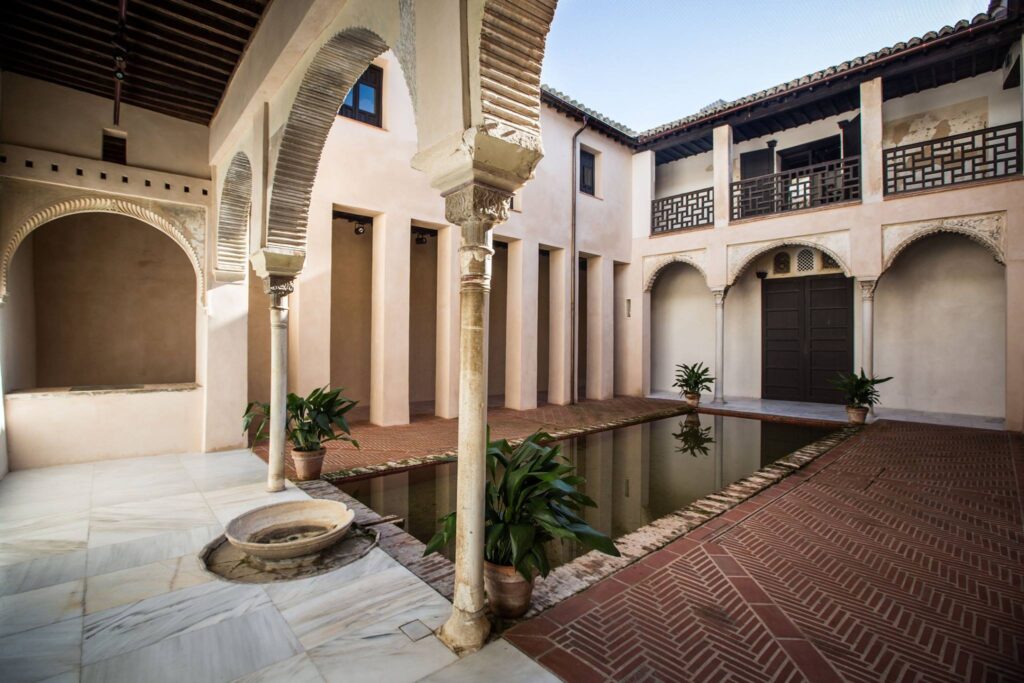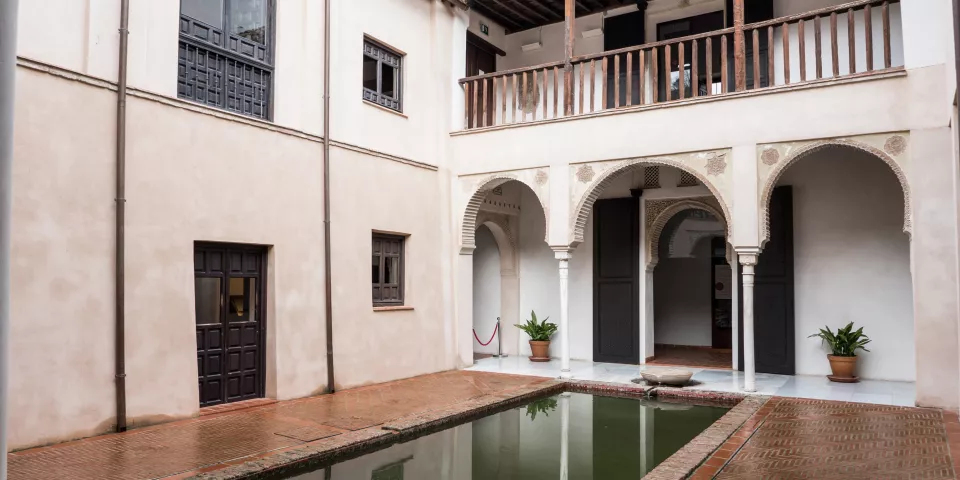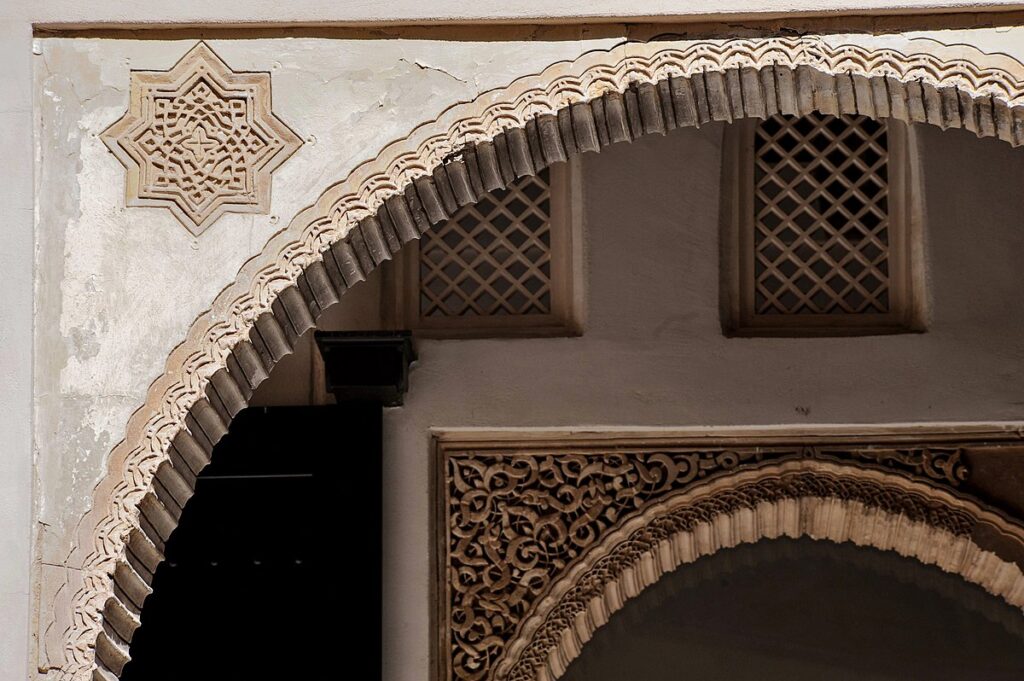- Inicio
- Negocios
- Qué ver y hacer
- Alquiler de coches
- Noticias
- Propiedades
- Agenda de ocio
 EN
EN
Casa de Zafra
Casa de Zafra and Centro de Interpretación del Albaicín
Nestled within the labyrinthine streets of Granada’s iconic Albaicín neighborhood lies Casa de Zafra, a historic gem steeped in centuries of Moorish and Spanish heritage. This meticulously restored 14th-century Nasrid house serves as a window into the rich cultural tapestry of Granada, offering visitors a captivating journey through its storied past. Its location in the Albaicín’s suburb suggests that its original owners belonged to an important noble family of the Nasrid kingdom. After the conquest of Granada, Queen Isabella the Catholic granted the lands, including the Casa de Zafra, to her faithful secretary, Don Hernando de Zafra. Upon his death, the space was used to build the convent of Santa Catalina de Siena, without the need to demolish the house. Therefore, Casa de Zafra was preserved almost intact within the convent’s premises, standing out as a unique space within the monastery complex.
As visitors step through the ornate doorway of Casa de Zafra, they are transported back in time to the medieval era, where intricate stucco work, carved wooden ceilings, and tranquil courtyard gardens await. This architectural masterpiece provides a glimpse into the daily lives of Granada’s residents during the Nasrid period, showcasing the blending of Moorish and Christian influences that define the city’s unique character.

Within Casa de Zafra, travelers will discover the Centro de Interpretación del Albaicín, a dynamic interpretive center dedicated to exploring the history, culture, and traditions of the Albaicín neighborhood. Through interactive exhibits, multimedia presentations, and informative displays, visitors gain insight into the Albaicín’s evolution from its Moorish origins to its present-day status as a UNESCO World Heritage site.
The Centro de Interpretación del Albaicín offers a comprehensive overview of the neighborhood’s rich architectural heritage, from its ancient Moorish fortifications to its charming whitewashed houses and labyrinthine alleys. Visitors can learn about the Albaicín’s role as a vibrant center of Moorish culture and commerce during the medieval period, as well as its subsequent transformation into a thriving hub of artistic and intellectual activity under Spanish rule.

In addition to its historical significance, Casa de Zafra and the Centro de Interpretación del Albaicín provide a platform for exploring contemporary issues facing the neighborhood, including urban development, cultural preservation, and community engagement. Through engaging exhibits and educational programming, visitors are encouraged to reflect on the Albaicín’s past, present, and future, and to appreciate its enduring legacy as one of Granada’s most cherished cultural treasures.
The journey through the Interpretation Center covers four main themes: World Heritage concept, Granada’s origin and evolution, the Albaicín, and a Nasrid house recreation.
In the entrance hall, visitors learn about the Albaicín’s designation as a World Heritage Site since 1994 and the Center’s goal to showcase its historical, artistic, and cultural significance.
The tour continues with Granada’s history, closely tied to the Albaicín’s evolution from Iberian settlement to Enlightenment-era city.
On the upper floor, visitors explore the neighborhood’s living heritage, including its streets, squares, viewpoints, and Islamic remains.
Lastly, a room featuring Nasrid epigraphic decoration explains domestic life in Islamic houses using Casa de Zafra as an example.

Dirección: C. Portería Concepción, 8, Albaicín, 18010 Granada
Horario: Invierno: del 15 de octubre al 14 de marzo: de martes a sábado de 10 a.m. a 2 p.m. / 4 p.m. a 7 p.m., domingo: 10 a.m. a 2 p.m. Verano: del 15 de marzo al 14 de octubre: de martes a sábado de 9:30 a.m. a 1:30 p.m. / 5 p.m. a 8 p.m., domingo: 9:30 a.m. a 1:30 p.m. Tarifa de entrada: 3 euros. Entrada gratuita los domingos.
Si desea seguir explorando el barrio del Albaicín, no dude en reservar uno de nuestros tours guiados por el Albaicín, que le llevarán a los sitios más importantes para visitar.
